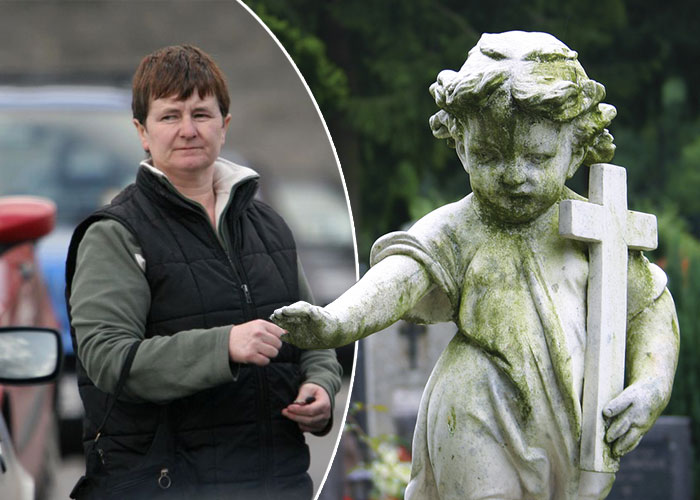
[dropcap]W[/dropcap]hen ‘Official Ireland’ was a land of saints and scholars where contraception and divorce were illegal, the Kerry Babies scandal shook the nation. Joanna Hayes found herself at the eye of the hurricane that was a torn Ireland, where times were slowly beginning to change in public mindsets, but not yet officially.
Hayes wasn’t the only one trapped in the transition. Anne Lovett was a 15-year-old girl who gave birth beside a statue of the Virgin Mary and died in 1984. Sheila Hodgers was refused cancer treatment because of her pregnancy in 1983. Eileen Flynn was fired from a Catholic school because she was unmarried and got pregnant in 1982.
Joanna Hayes worked in the town sports complex and was in a relationship with a married man, Jeremiah Locke. At 25 years of age, she was raising a daughter. She got pregnant at the same time as Locke’s wife, Mary Locke. On the 13th of April 1984, Hayes gave birth prematurely in a field beside her home and her baby boy died. A day later, newborn Baby John was found stabbed to death in Cahersiveen beach- the first Kerry baby. The Hayes family was taken in for questioning and confessed to the murder. The day after, Hayes’ baby was found on the farm, wrapped in plastic – the second Kerry baby. Hayes claimed that this was is her baby and her family retracted their initial statements, explaining that the guards had been ‘harsh’ in extracting their confessions. The Garda Síochána have recently announced plans to revisit the infamous Kerry Babies case and examine the question that was left unanswered- who killed Baby John in 1984?
Dr Mark O’Brien, who is a journalism history lecturer at DCU and was a teenager in Tralee during the controversy, gives his insight on whether the murder squad forced confessions.
“The interrogation of Hayes and her family took place at a time of very serious concern of how the Garda Síochána was dealing with crime,” he says. “In light of last week’s state apology, people need to make up their own mind on how she was treated while being questioned. We know that several of her interrogators went on to star in later Garda controversies such as the killing of John Carty and the Donegal scandals of the 1990s.”
A tribunal investigating the case launched in October 1984. Hayes spent longer in the witness box than any other person in the republic. She sometimes had to be sedated to be able to testify, which saw her rest her head on her microphone with her eyes closed when speaking.
The judge, Kevin Lynch, believed that this was a case of superfecundation – that Hayes was impregnated by two different men, gave birth to twins with different fathers and was responsible for both of their deaths. Only ten cases of superfecundation have ever been recorded. Nell McCafferty writes in ‘A Woman to Blame’ that the tribunal saw five months of 43 men giving their opinion if the woman brought before them had achieved ‘the unlikely’.
Supporters all over the country sent Hayes yellow roses as a sign of solidarity and support. O’Brien recalls the flowers. “I remember the silent protests outside the council chambers in Tralee where the Tribunal sat. Women would give flowers to Hayes as she went in and out of the hearings.”
“Mary Holland of the Irish Times noted that the Kerry Babies saga perfectly summed up Irish society at the time because everyone knew that ‘women were to blame because women tempt men, conceive children and make an unholy mess of things when nobody wants to be left holding the baby’,” he adds.
The report from the tribunal in 1985 implies that Joanne is still responsible for the death of her child. It contains ‘widely disputed findings’, according to the Irish Times. Re-opening the case now means ripping back the wounds that Joanna Hayes has spent more than 30 years nursing, possibly to no avail.
Women were viewed as ‘fourth class citizens’ in the 20th century, according to O’Brien. Hayes was called a ‘woman of loose morals’ during the Tribunal – capable of anything, even a pregnancy as rare as superfecundation. McCafferty noted that the tribunal examined the source of the great corruption that was ‘womanhood itself’.
The 33-year-old case is still as important today as it was back then. Women have come a long way in fighting for equal treatment, since those dark times in the 1980s. Women’s marches and the MeToo movement show that times are changing once again. However, we mustn’t forget the battles fought to get to where we are today- the war between women and how they were- and still are- treated in society.
In 1984, Judge Lynch was greeted with hundreds of women when he left the council chambers after a day of hearings. They frustrated him. “‘What have I got to do with the women of Ireland in general? What have the women of Ireland got to do with this case?” he raged.



